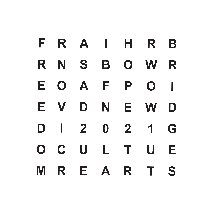The Museum of Vojvodina

The Museum of Vojvodina, cultural institution with more than 150 years of museological tradition, is one of the biggest general museums in Serbia, with invaluable collections of Vojvodinian cultural heritage. It was founded on the initiative of renowned Serbs from Vojvodina, on the session of the Matica Srpska management board in Pest in 1847, and was named "Serbian National Collection and Museum". The Museum of Matica Srpska was founded in 1933, as the first public cultural institution of the kind in the history of Novi Sad, with the task of collecting and preserving museum acquisitions from the territory of Vojvodina. The Museum of Matica Srpska has established the following collections: the paintings gallery, archeological, ethnological and numismatic collection, the collection of valuable photographs and stereotypes, a library and an archive. Dynamic development of museum activities in the Autonomous Province of Vojvodina commenced after the World War II. The Museum of Vojvodina was founded in 1947, containing the collections of archeology, history, ethnology, art, zoology, botany, geology, paleontology and mineralogy. The Museum of Vojvodina has, consistent with the tradition of Matica Srpska, generated honorable cultural and scientific institutions: the Institute for the Protection of Cultural Monuments of Vojvodina, the Institute for the Protection of Natural Heritage of Vojvodina, the Novi Sad City Museum, the Theatre Museum, and the Museum of Labor Movement and National Revolution. The Museum of Vojvodina got its present name in 1992, after the merging of the Vojvodina Museum and the History Museum of Vojvodina. The Museum of Vojvodina is one of the oldest and richest museums in Serbia, housing collections of archeology, history, history of art, and ethnology, with close to 500,000 original objects. The Museum of Vojvodina includes the following annexes: the Čelarevo Castle – period furniture exhibitions from the baroque period to neoclassicism (18th-20th century), the Press Museum – the memorial house, with its base reconstructed, where the first edition of magazine "Slobodna Vojvodina" (Free Vojvodina) was printed in 1942, and the Ethno House in Bački Jarak. The Museum of Vojvodina researches, collects, preserves, protects, knowledgeably and scientifically handles, exhibits and publishes objects and documents significant for the cultural history of the people of Vojvodina, from the times of the first traces of human civilization on the territory of Vojvodina to the middle of the twentieth century. Articles of rare artistic and museological value that adequately reflect the past of the Vojvodina region are exhibited in the museum’s permanent exhibition, integrated into three thematic units: archeology, history (history of art) and ethnology. The permanent exhibition with 6000 exhibits on 3000 m2 realistically presents the Vojvodina past, from prehistory to the middle of the 20th century, and achievements of the civilizations living here in the 8000-year time span. Archeological part of the permanent exhibition displays three aspects – housing, funeral processions and traces of material culture of the first civilizations, later ethnic groups, that existed on the territory of Vojvodina until the end of the Middle Ages. The historical part of the permanent exhibition displays Vojvodina cultural, political, economic and military history, period up to the end of the Second World War, in all the segments of social life (health care, education, spiritual life, visual and applied art, physical education and sports, economy, handicraft, etc.). Ethnological section of the permanent exhibition is integrated into the following thematic units: national architecture of Vojvodina (rural) a Vojvodina village – economy, weaving and spinning as characteristic activities of Vojvodina women, housing, customary life and the national costumes of Vojvodina. The exhibition is situated in two buildings of the Museum in Novi Sad. Besides the permanent exhibition, the museum organizes exhibitions on certain topics – thematic exhibitions – exhibiting its own collections, as well as guest exhibitions from other national and foreign museums. The Department of History features the Collection of Applied and Visual Art with collections of period furniture, clocks and pictures, silverware, glass, porcelain, faience and women’s handicraft. Collections of visual arts have been formed: the collections of paintings, prints, sculptures, tapestries and mosaics with numerous unique items. Thematic exhibitions: visual art, applied art, one-person exhibitions, “Vojvodinian Artists” cycle, international guest exhibitions. Exhibitions of paintings: Sava Šumanović. “Vojvodinian Artists” cycle: Jovan Bikicki, Petar Mojak, Štefica Radovanov, Vera Zarić, Giga Đuragić, Sava Stojkov; sculptures: Jovan Soldatović, Zoran Petrović. Guest exhibitions: Vincent Hochnik – Slovakia; Fritz Mihálly and Kalmár Márton, sculptures – Hungary; János Kass – Hungary. Applied art from the collection of the Museum of Vojvodina: clocks from the museum’s clock collection, icons on glass.












